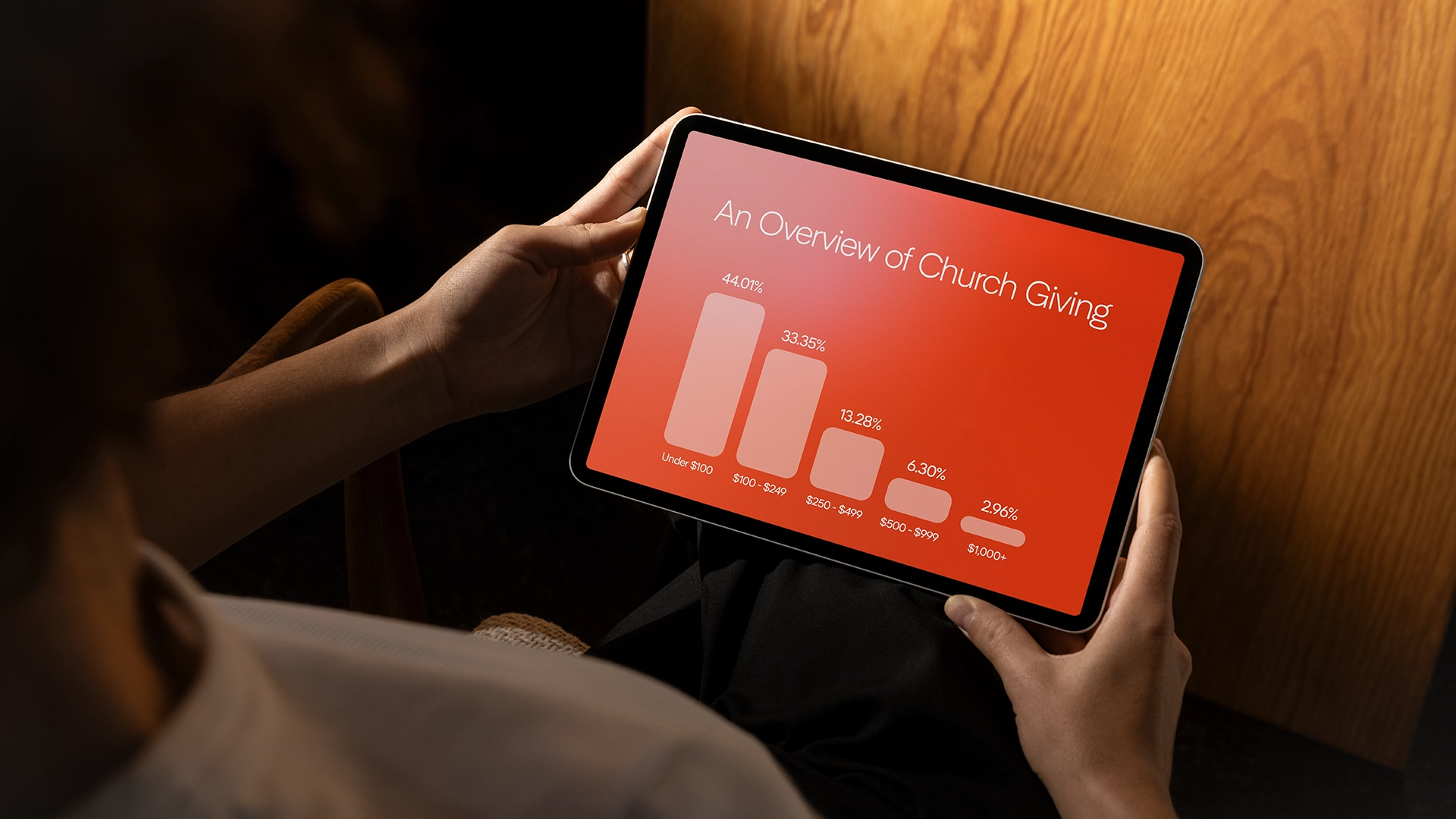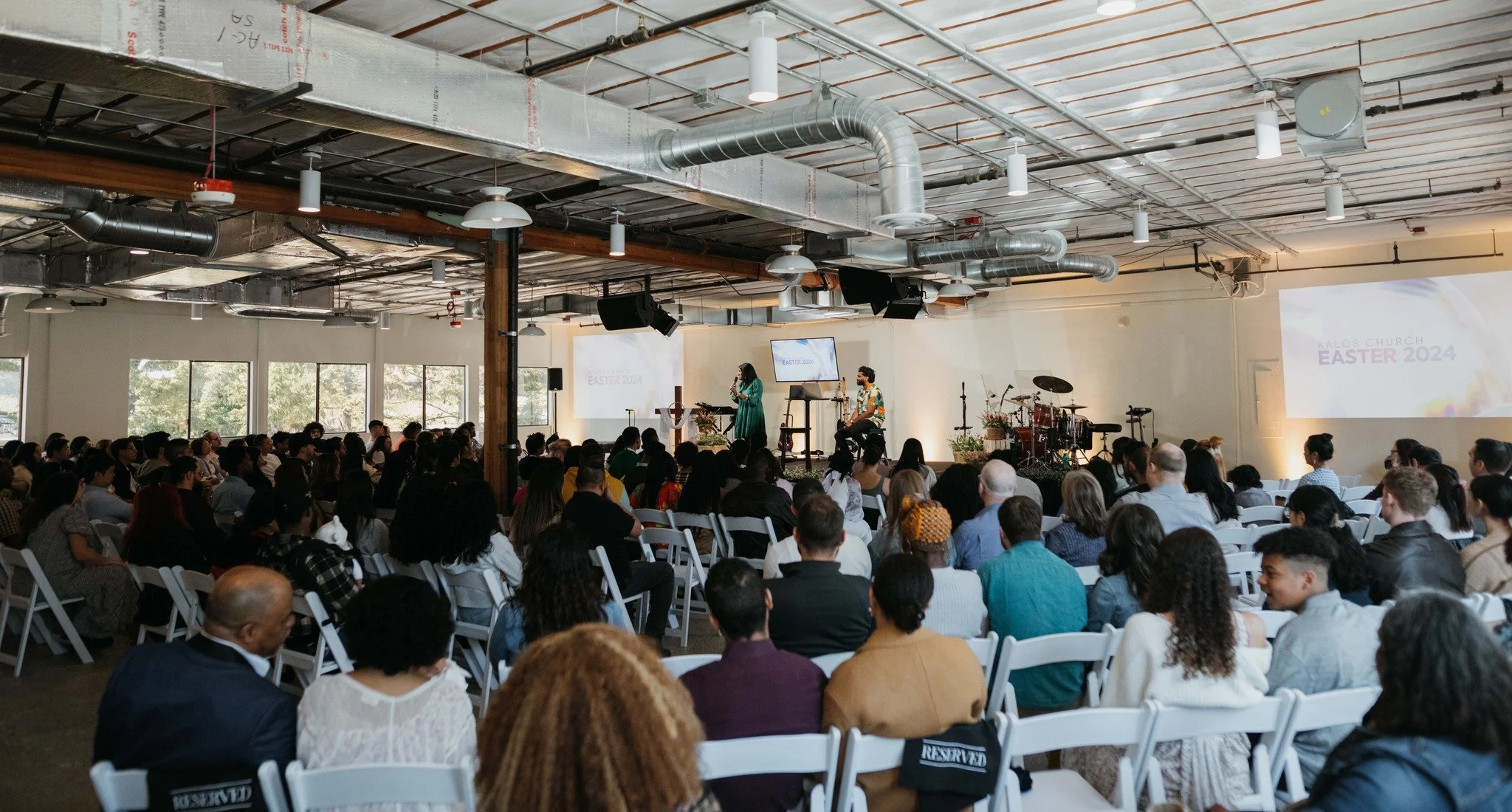Across the country, pastors and church leaders are quietly wrestling with a hard reality: giving is down again.
“We’re preaching the Word, running ministries, serving our community, but we are struggling to meet the budget.”
This isn’t just a budget issue. It’s a discipleship issue. It is more widespread than many realize.
Despite the faithful work of churches, church giving statistics indicate that a slow but steady decline in giving is causing ministry fatigue and financial strain. What was once an uncomfortable trend has become a growing crisis.
The Numbers Are Alarming
Let’s look at the data
- Giving among evangelicals has declined by about 15% over the past few years.
- The average Christian today gives 2.5% of their income to their church.
- That’s down from 3.3% during the Great Depression, a time of massive economic hardship.
This isn’t just a statistical dip. It is a generosity crisis, and it demands our attention. Christian giving statistics show the decline is sharper than many church leaders realize, making financial education more urgent than ever.
Another troubling truth? The Church today receives less support, even in times of relative financial stability, than it did during one of the most challenging eras in modern history.
It begs the question: What changed?
Why Declining Giving Matters for Churches
Most churches rely on giving for over 90% of their income. Weekly tithes and offerings support:
- Staff salaries
- Ministry program
- Local outreach
- Building upkeep
- Church planting and missions
When giving trends decline, the results are immediate and painful: delayed building repairs, reduced staff hours, cancelled ministry events, and paused outreach projects.
It’s not just the budget that suffers. It’s the mission.
Why Financial Literacy, Not Donor Fatigue, Is the Real Issue
When giving drops, many leaders assume people are burned out on generosity. They point to “donor fatigue,” economic stress, or younger generations who “just don’t give like their parents did.”
But what if those explanations miss the root issue?
One pastor put it this way:
“We do not have a giving problem. We had a financial literacy problem.”
The real issue is not that people don’t care. It’s that many don’t know how to give faithfully because they’ve never been taught how to manage money in a God-honoring way.
Financial Discipleship as Spiritual Formation
At its core, this is not a financial problem. It’s a spiritual formation problem.
Jesus often spoke about money, not because He required it, but because how we handle money reflects the condition of our hearts.
When people live paycheck to paycheck, burdened by debt, lacking savings, and consumed by worry, generosity often becomes an afterthought, even if the desire is there.
If churches want to see consistent, joyful giving, they must first help their people experience financial health and biblical stewardship.
Culture Disciples People, So the Church Must Too
Right now, the average church member is being discipled by the world daily.
- Social media glorifies spending and status.
- Credit card companies reward overextension.
- Schools rarely teach financial basics.
- Culture tells people they deserve everything now.
If churches stay silent about money, we leave our people spiritually vulnerable to financial chaos.
We cannot ask for generosity from people who have never been taught how to steward what they have. We must disciple them financially, spiritually, and practically.
What Financial Discipleship Looks Like in Practice
Financial discipleship isn’t about preaching one stewardship sermon a year. It’s about creating a culture where money is talked about honestly, biblically, and consistently.
It looks like:
- Teaching that God owns everything. We’re just stewards.
- Helping people build and live on a budget.
- Guiding them to pay down debt and create margin.
- Modeling generosity as a lifestyle, not a moment.
- Aligning financial practices with spiritual priorities.
Financial discipleship moves people from survival to stewardship, and eventually to generosity.
Why Financial Education in Church Is the Missing Link
Many churches have tried giving campaigns, donor drives, and sermon series on tithing. But these often address symptoms, not root causes.
That is where financial education comes in.
When churches teach biblical money principles like debt reduction, budgeting, contentment, and generosity, people don’t just give more. They experience freedom.
They begin to see money not as a source of anxiety, but as a tool for mission.
Implementation Starts Small: How Churches Launch Financial Discipleship
This is where pastors often hesitate: how do we actually start? The good news is that financial discipleship works best in small, relational settings like small groups or staff teams. One church began by running a financial discipleship curriculum with their staff, then later expanded it to their entire congregation. The model was simple: start with leaders, build shared language and trust, then scale across the church.
By presenting financial discipleship as a small group journey rather than a one-off class, churches make it more personal, sustainable, and scalable.
Real Change Requires a Real Shift
It’s time for churches to reframe how they approach giving.
Instead of simply asking for more, we must ask:
“How can we help our people steward what they already have?”
By integrating financial education into your discipleship strategy, you don’t just increase giving, you increase peace, purpose, and long-term faithfulness in your congregation.
And as people begin to experience a breakthrough in their personal finances, generosity becomes the natural overflow.
The Churches Leading the Way
The shift is already happening.
Churches across the country are choosing to move from fundraising to formation, from asking for more gifts to helping their people to steward what they already have.
They’re doing this by embedding financial education into the life of their congregation. Not as a gimmick. Not as a one-off workshop. But as part of a larger vision to form disciples who reflect Christ in every area of life, including their wallets.
And the results are powerful.
Compass Christian Church: From Uncertainty to Overflow
One powerful example is Compass Christian Church in Texas.
In a season of change, Compass moved on from a large multisite structure to an independent church. Financially, they were at a crossroads. They could have chosen the typical route: make a strong push for donations to sustain the transition.
But they did not.
Instead, they introduced Generosity University, an eight-lesson financial curriculum focused on biblical discipleship. They taught their congregation how to build a budget, eliminate debt, and live generously from a place of freedom, not pressure.
The outcome? Giving increased, yes. But more importantly, people became free from shame, from debt, and from confusion. And the church culture shifted from scarcity to sustainability.
From Obligation to Empowerment: How Formation Changes Giving
Another powerful example comes from a large, innovative U.S. church known for shaping how ministry is done worldwide.
Their team didn’t view financial discipleship as a finance issue but a formation issue. That is why they integrated Generosity University not as a giving initiative, but as a discipleship tool. A way to grow the faith and maturity of their people.
And it worked.
Thousands of participants engaged with the material, and countless stories emerged of people stepping into consistent generosity not just out of obedience, but through practical application. This is what we call generosity discipleship: a journey that moves people from obligation to joy-filled participation in God’s mission.
This shift from obligation to empowerment is key.
What Makes Generosity University Different From Other Programs
Most generosity programs start and stop with giving. They focus on behavior, not belief. And while they may generate short-term bumps in donations, they rarely create lasting change.
Generosity University flips that script.
Built by church leaders for church leaders, this generosity discipleship program helps congregations:
- Understand the why behind generosity
- Learn the how of budgeting, saving, and giving
- Reframe money as a discipleship issue, not a donation issue
- Cultivate a lifelong posture of open-handedness
The curriculum is video-based, easy to implement, and designed for modern church rhythms. Whether you're a church of 100 or 10,000, it scales to fit your people and your mission.
Financial Discipleship Is Not Optional Anymore
If we care about the spiritual health of our churches, we cannot ignore money. Not because the church needs more of it, but because money reveals what our people trust.
As Jesus taught, “You cannot serve both God and money.” (Matthew 6:24)
That’s not a financial statement. It’s a spiritual one.
When people live in bondage to debt or anxiety about their finances, their faith is affected. Their relationships are strained. Their peace is robbed.
Churches must offer a better way.
How to Start in Your Church: Quick Checklist
If this all sounds compelling but a bit overwhelming, here is the good news. You don’t have to reinvent the wheel. You just have to take the next step.
Here’s a simple way to get started:
1. Start the Conversation
Preach a message about stewardship, not just tithing. Talk about church giving statistics. Help your congregation understand that how they handle money is a spiritual practice, not just a practical one.
2. Break the Stigma
Create a culture where it is okay to talk about financial struggles. Encourage transparency. Let people know they are not alone, and they are not judged.
3. Offer a Pathway
Use a proven tool like Generosity University to guide people through a transformational journey. Start with a pilot group with elders, small group leaders, or young families.
4. Make It Part of Discipleship
Do not treat generosity like a side initiative. Integrate it into your spiritual growth pathway. Talk about it regularly, not just during giving moments.
5. Celebrate Transformation
Share stories of people who have found financial peace or taken bold steps in giving. Let those testimonies lead the culture, not pressure or guilt.
This Isn’t About Money, It’s About Mission
Imagine what your church could do if the financial burden wasn’t always looming. With modern options like NFC church engagement tools and generosity discipleship, opportunities expand.
- What outreach could you fund?
- What staff could you hire?
- What missionaries could you send?
- What needs in your community could you meet?
Now imagine what your people could do if they weren’t living under financial stress.
- What margin would they gain?
- What joy would they rediscover in giving?
- What witness would their generosity become?
This is what happens when we teach financial discipleship and church financial literacy. We unlock both ministry potential and personal freedom.
Final Encouragement for Church Leaders
Pastor, you carry a lot. But you do not have to carry it alone.
You do not have to preach one more tithing message or reference church giving statistics, and hope this time something changes. You don’t have to cut another program to make the budget work. You don’t have to silently wonder if your church is slipping backward.
You can take a proactive, pastoral step forward.
By choosing to teach financial discipleship, you’re not asking for more, you’re offering more:
- More freedom
- More faith
- More clarity
- More transformation
And ultimately, more fuel for the mission God has given your church. Financial education in church is no longer optional - or awkward - it is the pathway to healthier believers, stronger ministries, and a more generous culture.
Ready to Lead This Change?
Learn more about Generosity University
Schedule a strategy call with the team
Download free tools to help your church talk about money well
Invite your leadership to preview the Generosity University experience
Looking Ahead: Blog 2 in the Generosity Series
This post is the first of a three-part series:
Blog 1 (this one): Why Financial Education Matters
Blog 2: Generosity University: A New Way to Teach Biblical Giving
Blog 3: How Churches Are Using GenerosityU for Real Impact
Be sure to continue the journey. The next post will look into what makes Generosity University a proven, scalable, and deeply spiritual tool for transforming church giving from the inside out.
Overflow is a revolutionary generosity partner
We make giving donations easier than buying a cup of coffee.
Related Content
Sign up for our updates
Stay up to date on the latest innovations happening at Overflow.





